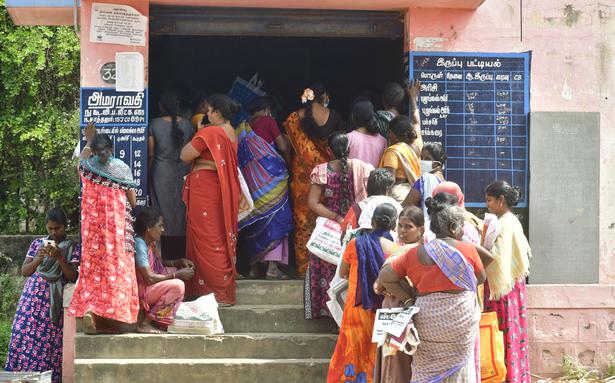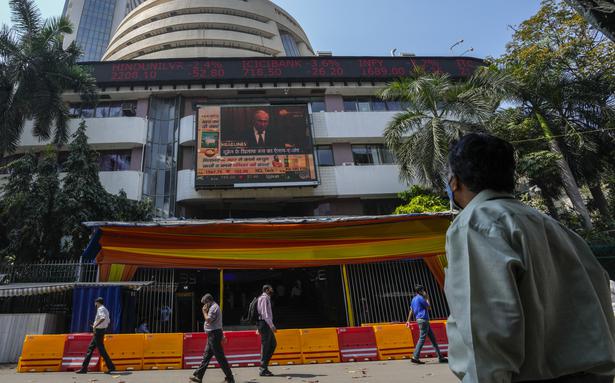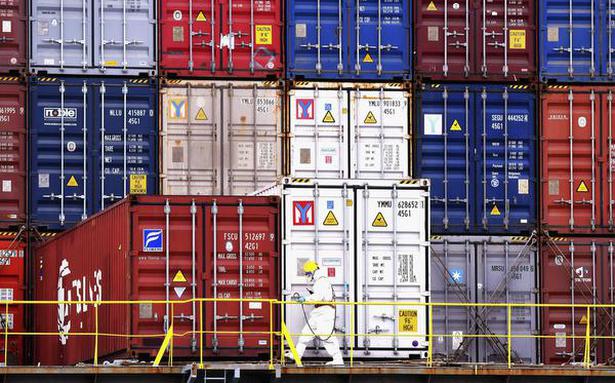A new (International Monetary Fund) IMF paper released Tuesday, titled “Pandemic, Poverty and Inequality: Evidence from India,” reveals that “extreme poverty in 2020 due to Pradhan Mantri Garib Kalyan Ann Yojana (PMGKY ) was kept below 1%.
A new (International Monetary Fund) IMF paper released Tuesday, titled “Pandemic, Poverty and Inequality: Evidence from India,” reveals that “extreme poverty in 2020 due to Pradhan Mantri Garib Kalyan Ann Yojana (PMGKY ) was kept below 1%.
The 52-page paper, authored by Surjit S. Bhalla, Karan Bhasin and Arvind Virmani, also shows that the expansion of India’s food subsidy program has absorbed much of the pandemic shock. According to the paper, extreme poverty was just 1% in 2019 – a significant reduction in the poverty rate from 2011 levels.
The paper argues that the inclusion of the food subsidy data has contributed to the conclusion that the “official poverty line” needs to be shifted from (population living on <$1) PPP $1.9 to $3.2. In terms of rupees, it ranges from Rs. 865 per person per month to Rs. 2250 per person per month.
The paper also contradicts another Pew research paper that pushed 75 million Indians into poverty and claims the data was calculated in the absence of an “official” Consumption Expenditure Survey (2017-18). She also claims that “extreme poverty” has been eradicated in India.
The authors are – Surjit Bhalla (Executive Director IMF India), Arvind Ramani (Founding Chairman, EGROW) and US-based researcher Karan Bhasin.
[New Paper]
"Pandemic, Poverty, and Inequality: Evidence from India" with @dravirmani and @karanbhasin95
We look at poverty & inequality estimates for India and here are a few big takeaways –
1/nhttps://t.co/LCC9skn3Cf#EconTwitter— Surjit Bhalla (@surjitbhalla) April 6, 2022
What did the 2017-18 consumer survey reveal?
-
Between 2011-2012 and 2017-2018, average real rural income consumption decreased by 8.8% and real urban consumption increased by 2%
-
Inequality in rural areas has been reduced through ‘levelling’ – reducing everyone’s income, but proportionately more for the wealthier than for the poor.
-
Largest decline in real consumption inequality since 1982
-
Extreme poverty increased from the 2011-12 NSS estimate of 12.2% in 2011-12 to around 17% in 2017-18. Never before in the history of Indian data from 1951 to the present has CES absolute poverty increased.
-
The derived nominal average consumption in the 2017-18 data was Rs. 1892 per capita per month (PCPM) in rural India and Rs. 3739 per capita per month in urban India – the lowest in Indian history
Poverty rate (excluding food transfers) | Photo credit: Surjit Bhalla; Karan Bhasin; Arvin Virmani
How does this paper contradict this data?
-
This paper dismisses the NSS’ 2017-18 consumer spending survey as “unfortunate” and claims: “Food subsidies have consistently reduced poverty since the passage of the Food Security Act (FSA) in 2013.
-
This paper describes the “Uniform Recall Method” (URP) – used to calculate consumption data on a 30-day recall basis – as “deprecated” and contradicts the Pew research paper, which claims that 75 million Indians in the years 2020- 21 were pushed into poverty.
-
According to the Modified Mixed Recall Method (MMRP), used to calculate consumption data on a 7-day recall basis, this paper claims that extreme poverty in both 2019 (0.76%) and 2020 (0.86%) ) remained at around 0.8%. ). Excluding food subsidies, poverty remains at 2.5% according to the MMRP.
-
Increasing efficiency in the distribution of food subsidies by using AADHAR
-
This paper also claims that real urban consumption growth was 3.3% and rural growth was 8.6% between 2011-12 and 2014-15, using NSS Consumer Surveys (Health and Education), non-food consumption data and real wage growth were included that “the 2017-18 survey cannot be considered credible”
Poverty rate (taking into account food transfers) | Photo credit: Surjit Bhalla; Karan Bhasin; Arvin Virmani
Other important findings of the IMF paper:
-
The pandemic shock is largely a “temporary income shock”. A large part of the shock was cushioned by temporary fiscal policy interventions, such as the expansion of food distribution.
-
Consumption inequality (taking into account food transfers) has fallen to its lowest level – the level observed in 1993-94.
-
Consumption growth was higher in 2014-19 than in 2004-11
-
Extreme poverty has been eradicated in India
India’s food distribution during the COVID pandemic
As part of the PMGKY, free ration distribution was initially announced from April to June 2020 and later extended to November 2021. PM Modi’s announcement during the initial full lockdown offered all beneficiaries 5kg of free grain over and above the normal quota under the National Food Security Act. In addition to wheat and rice, each family member received 1 kg of Chana Dal monthly for free.
The program is also included in the center’s One Nation One Ration Card (ONORC) initiative to allow all National Food Security Act (NFSA) migrant recipients to have enough grain at any store at fair prices across the country obtained by using their existing ration card Biometric authentication. The center claims that 69 million NFSA beneficiaries, or 86% of the NFSA population, have been enrolled in the ONORC plan as of December 2020.




